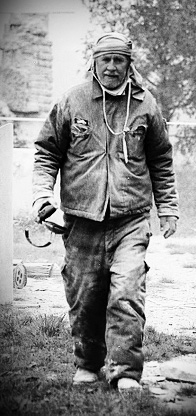
(fotó: Böszörményi István)
On the artist
“The human body excites me, exercises me, makes me curious. Like the apple or the maybeetle, the human body is part of the universe. It has a relationship with everything. The human body cannot be a closed system, as it becomes and ceases to be. This is philosophy. The philosophy of the body. Man uses his mind, his soul to examine the human body. I want to make it apparent that it is a man who is examining. Examining? That’s right, I want to document the present continuous.”
“All my sculptures are about the human body. Even when it is only a nail: it is part of the human body. One’s body carries the personality, the beauty, only not in a select moment, but in a process. One can truly show oneself by existing in time, in a dimension that is completely different from the dimension of sculpture. The point of my programme in sculpture is that whatever body part we are talking about, it has to be able to perform itself. I try to condense the beauty a human radiates over time into a single moment.”
“I began my career as a figural sculptor, and I had to realize that whenever a figure becomes the subject of a sculpture, it will, by necessity, perform gestures. The gestures prevent physical beauty itself from appearing. In Greek sculpture, the same gestures were used for centuries. As a result, gestures had no significance. In my sculptures, I wanted to get rid of the gestures of the human figure, because I thought gestures belong in the world of theatre, not in sculpture.”
“The beauty I postulate cannot be related or received in a complete figure. I can intensify the sculptural statement only if I remove it from the whole and enlarge it. Every body part is a discovery. The sharp planes are there to cut the body so the audience can accept that it is not a fragment but an intentionally framed part. The act itself of framing is emphasized.”
“I find that 19th-century solution completely objectionable in which a torso is made by not finishing the arms, the neck or the trunk. This form was born when sculptors began to imitate the fragments of Renaissance sculptures in museums. This is rubbish, I think. If you make a detail of the human body, you have to acknowledge what you are doing. If I wanted to be philosophical, I would say the plane I use is not a form. It is a geometric intervention, into the system itself!”
(I.B.)